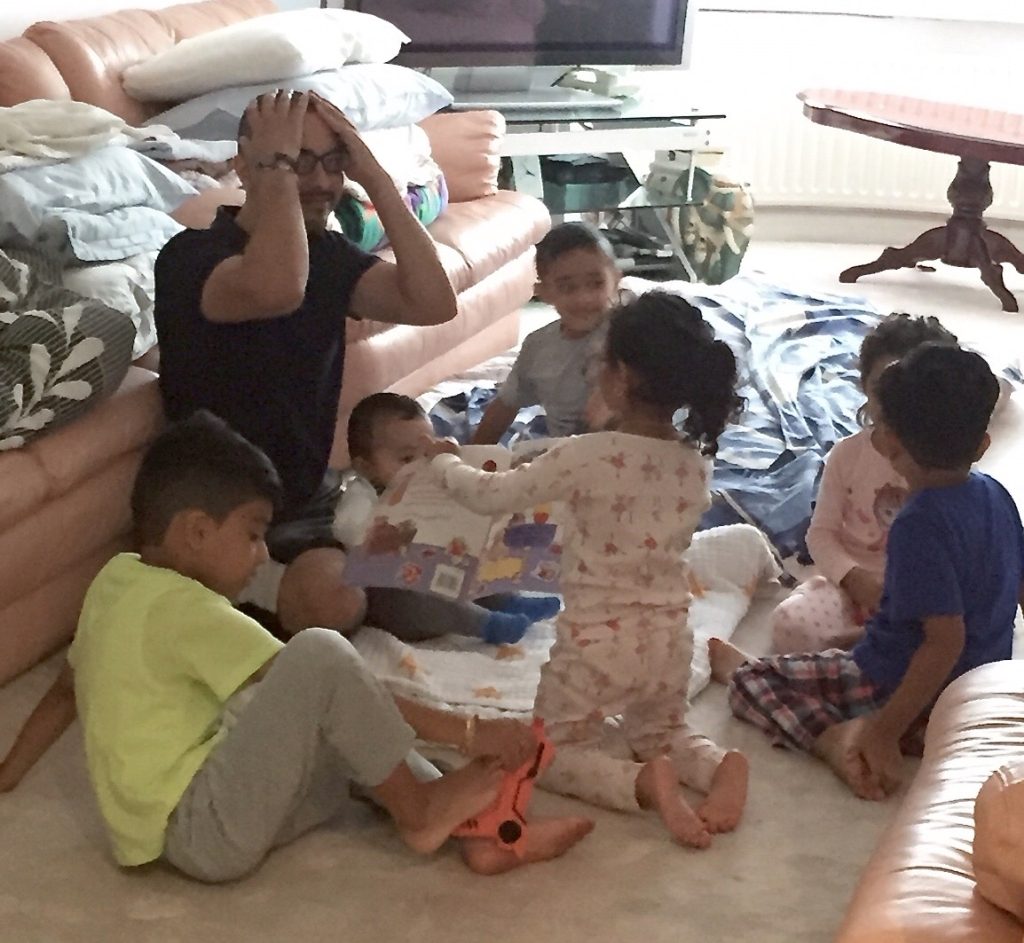by Sheena Dedhia – Follow @sheenad29
This post was originally posted on Runways & Rattles and was republished with permission.

[Photo Source: The Telegraph]
Recently we all made a trip to London for our cousin’s wedding – and by “all” we mean ALL of the kiddies and adults, on the same flight, there and back! We’re sorry if you happened to run into us and saw what a mess we truly were! Of course it was a blast having all the kiddies together as they were able to entertain each other at the airports. Baby D was only 6 months and still on the binky so he was pretty easy himself. However, we’re now gearing up for our next big family trip to Orlando, Florida for another cousin’s wedding – the kids are older, more active, and just crazy hyper! We’re jotting down some ideas of traveling with kiddies, near and far and would love to hear tricks you all have come up with too!
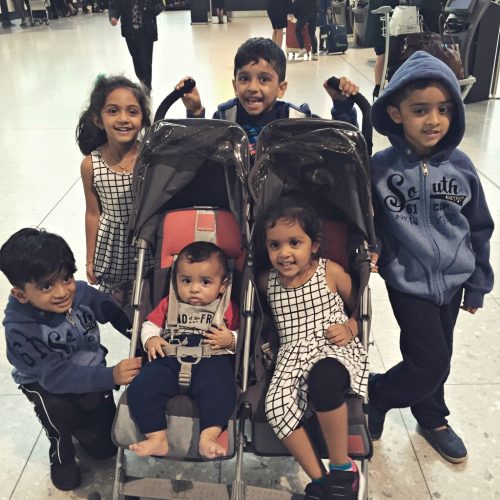
[Photo Source: Runways & Rattles]
Packing
The Baby: As you guys saw from our post on packing Indian clothes, we rely heavily on 2 gallon size zip lock bags! For the baby, all of his bottles, bottle brushes, spoons, etc. all go in zip lock bags to keep it contained and clean! We always pack a few emergency jars of food for the flight and in case we can’t get to a grocery store soon enough when we land. He also has such small clothes that we tend to put all of his stuff in individual zip locks to keep things somewhat organized and easily accessible – especially those wash cloths and bibs – they end up everywhere! We also make sure to pack some extra diapers from here just in case we can’t find any when we’re there! For our carry ons, we pack a small bottle for take off and landing with some formula (in most airports TSA allows it, they just need to scan it). We also pack some books since they tend to keep D busy for a while, and of course, his “blankie” to make him as comfy as possible.
The Big Kids: For the big 5, again we love our Ziplock bags (this is how we made use of those). We tend to put their smaller garments into the bags, and for their regular clothes, we just pack them sideways so that we can easily see and grab what we need. Packing for the older ones has definitely gotten easier because we no longer need diapers, wipes, bottles, special detergent for their clothes, etc (except that Nina will be starting all over again VERY soon)… So just the main essentials like clothes, under garments, socks, shoes, accessories, toiletries and we are good to go. Of course, each kid has their favorite blankie (boys) or stuffed animal (girls) so we make sure that we do NOT forget these. We also pack a few snacks that they definitely love, especially when traveling internationally. We realized this past trip, that having them adjust to what is available wherever we go makes life easier for us and them.
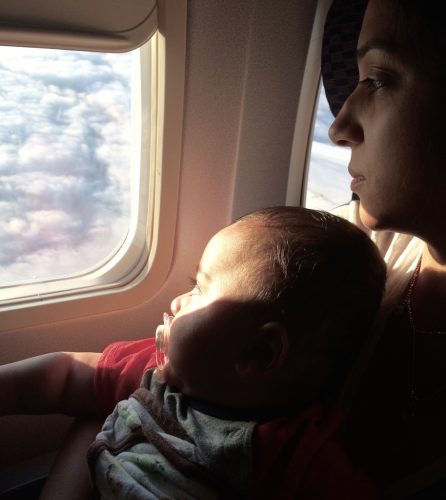
[Photo Source: Runways & Rattles]
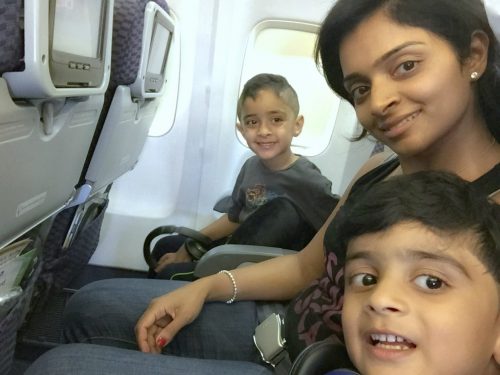
[Photo Source: Runways & Rattles]
En Route
The Baby: Of course D doesn’t get any electronics yet so it’s a little harder to keep him occupied. Now that he’s on the move, the last thing he wants to do is sit still! On a short flight we can let him crawl up and down the isle for a little while (which reminds us, we also pack lots of wipes to keep his hands clean). On longer flights we try to make it so that he would be super sleepy by the time we board and then hope that he would sleep a good chunk of it. Of course, if that’s not an option, we take quiet toys, books, and of course, our silly selves to keep him occupied. We know every lullaby, every nursery rhyme, anything that would keep his interest peaked!
The Big Kids: For the plane ride, each kid has their own little backpack that they put their ipad (boys) or LeapPad (girls) in and headphones, books, coloring pages, and crayons. For the long rides, we pack a few games, puzzles and books as backup. This is usually sufficient for the plane ride. They spend some of their time watching the airplane TVs, some taking naps and the rest on the iPad or activity. We usually pack some snacks, a water bottle per kid, and never forget lollipops for take-off and landing!
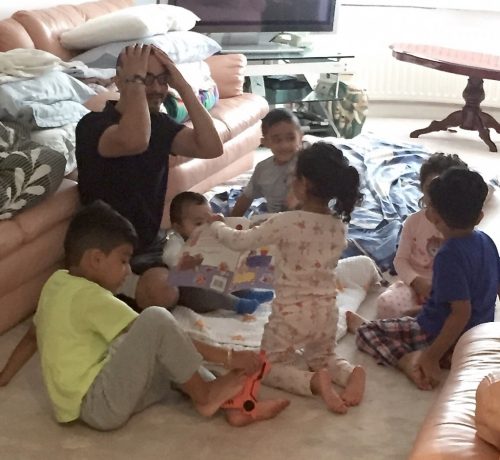
[Photo Source: Runways & Rattles]
Staying Arrangements
The Baby: The baby isn’t as easy as making a “pathari” i.e laying some sheets on the ground and putting him to sleep. For the baby we usually take a travel pack-n-play (Nina has traveled everywhere with hers) and put his swaddle blanket down so he has a familiar scent. We also rely heavily on white noise still, so we’re always taking it wherever he’ll be sleeping – it helps him have a familiar atmosphere and drowns out the unfamiliar noises around him. Again, we’re always taking emergency food and diapers just to be on the safe side!
The Big Kids: Sleeping arrangements have also gotten a lot easier with the bigger kids, depending on where we are staying. If we are staying in a home with family or friends, it makes it easier as we can just put down blankets/sleeping bags all over the floor and each of them claim their own space and sleep. In hotels, we usually get a room with 2 queen beds and have a parent per child sleep. In Sheena’s case, they either book two rooms or either daddy or kid will get fresh blankets or a cot from the hotel and spread it out in the open area. The hotels are always a challenge, but we manage. We usually pack Wheatabix (cereal) and buy a carton of milk wherever we go for breakfast in case they wake up insanely early to eat and are hungry.
These are just some travel tips we’ve learned along the way! With our big trip coming up, we’d love to hear what you guys have mastered in taking the tots away!
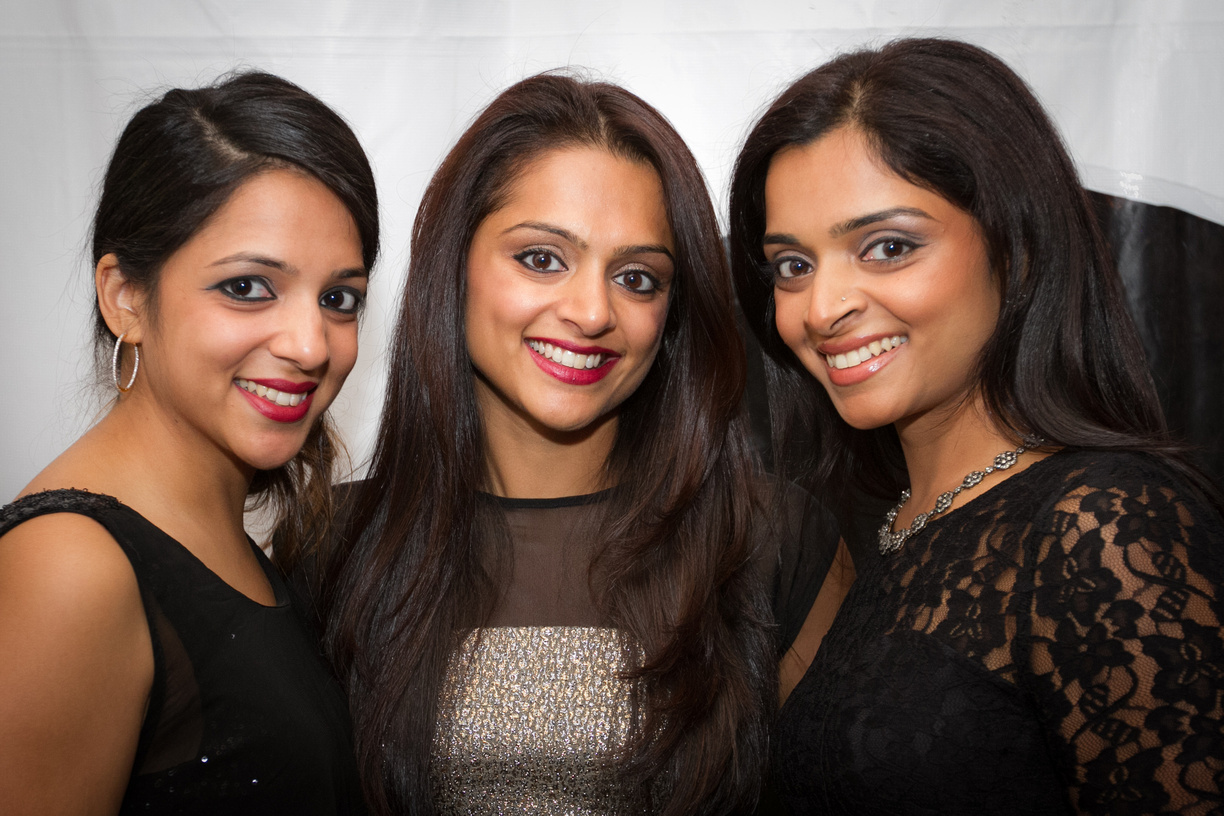 Runways & Rattles are 3 sisters, South Asian women, first generation Americans, and new mommies to 8 crazy kids and a pup! We share 3 different styles, 3 very different opinions and 3 different beliefs – but we all share the same enthusiasm, values and bond. Runways and Rattles has become our portal to share our individual styles, experiences and inspirations. We hope you enjoy the glimpse into our world, our life, our passions and our fashion! Do check out http://www.runwaysandrattles.com
Runways & Rattles are 3 sisters, South Asian women, first generation Americans, and new mommies to 8 crazy kids and a pup! We share 3 different styles, 3 very different opinions and 3 different beliefs – but we all share the same enthusiasm, values and bond. Runways and Rattles has become our portal to share our individual styles, experiences and inspirations. We hope you enjoy the glimpse into our world, our life, our passions and our fashion! Do check out http://www.runwaysandrattles.com
